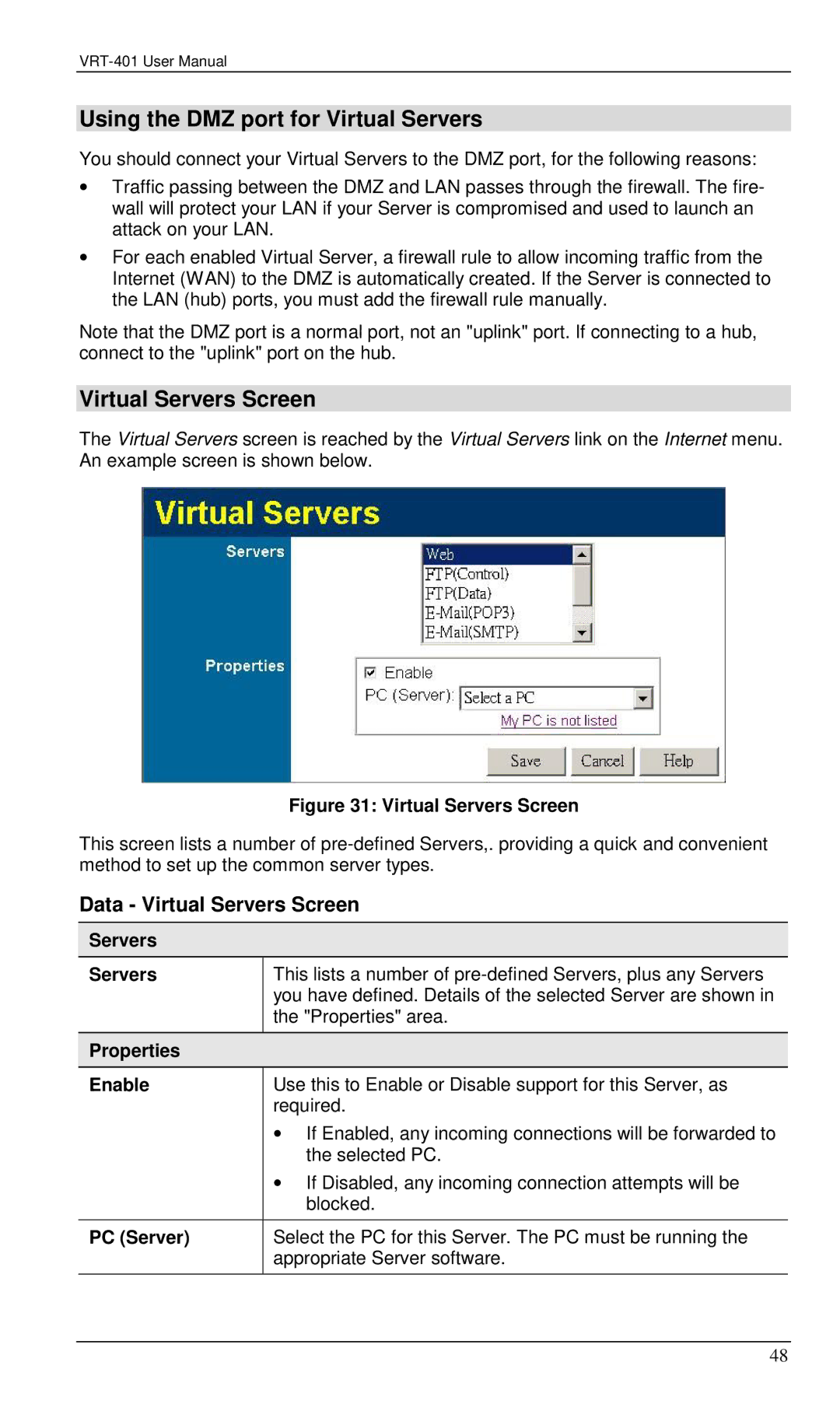
Using the DMZ port for Virtual Servers
You should connect your Virtual Servers to the DMZ port, for the following reasons:
∙Traffic passing between the DMZ and LAN passes through the firewall. The fire- wall will protect your LAN if your Server is compromised and used to launch an attack on your LAN.
∙For each enabled Virtual Server, a firewall rule to allow incoming traffic from the Internet (WAN) to the DMZ is automatically created. If the Server is connected to the LAN (hub) ports, you must add the firewall rule manually.
Note that the DMZ port is a normal port, not an "uplink" port. If connecting to a hub, connect to the "uplink" port on the hub.
Virtual Servers Screen
The Virtual Servers screen is reached by the Virtual Servers link on the Internet menu. An example screen is shown below.
Figure 31: Virtual Servers Screen
This screen lists a number of
Data - Virtual Servers Screen
Servers
Servers | This lists a number of |
| you have defined. Details of the selected Server are shown in |
| the "Properties" area. |
Properties |
|
Enable | Use this to Enable or Disable support for this Server, as |
| required. |
| ∙ If Enabled, any incoming connections will be forwarded to |
| the selected PC. |
| ∙ If Disabled, any incoming connection attempts will be |
| blocked. |
PC (Server) | Select the PC for this Server. The PC must be running the |
| appropriate Server software. |
48
